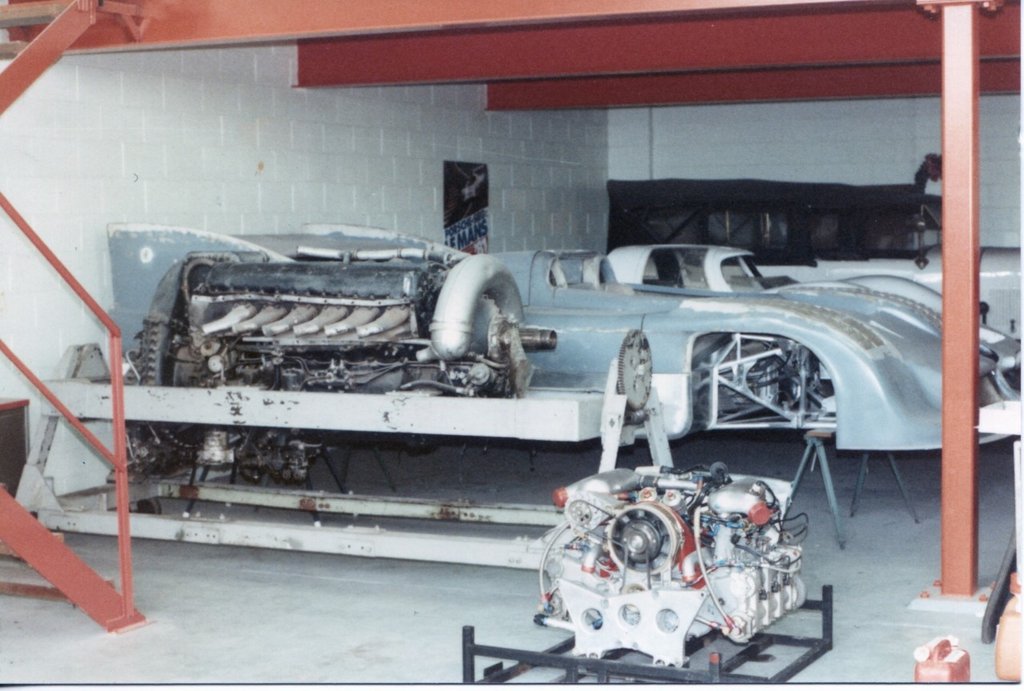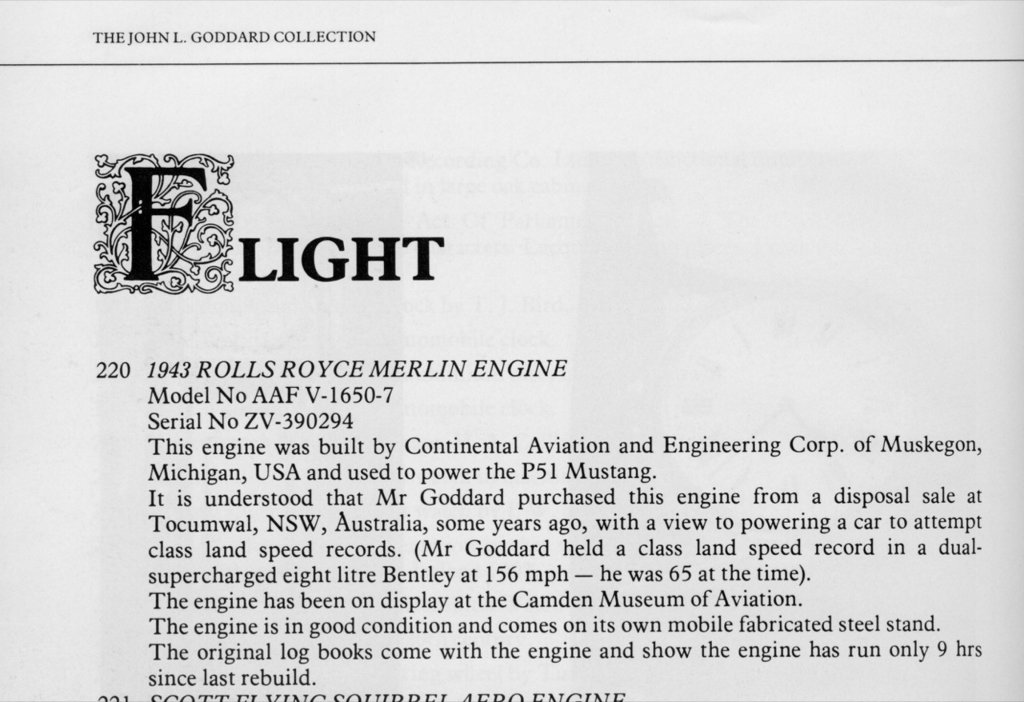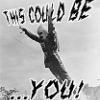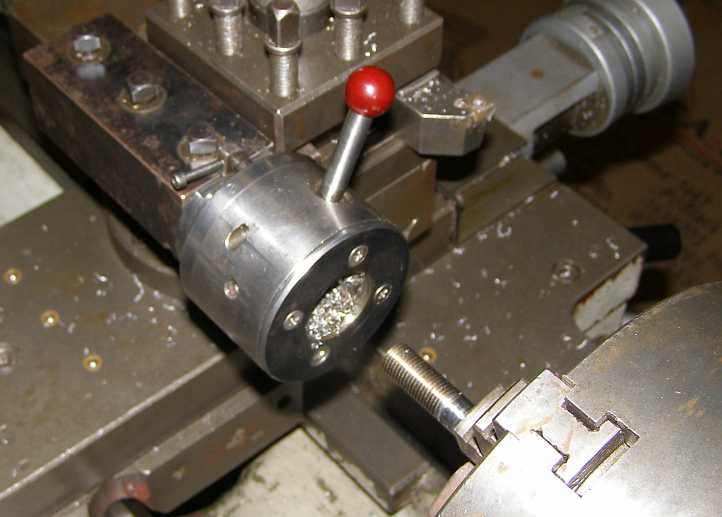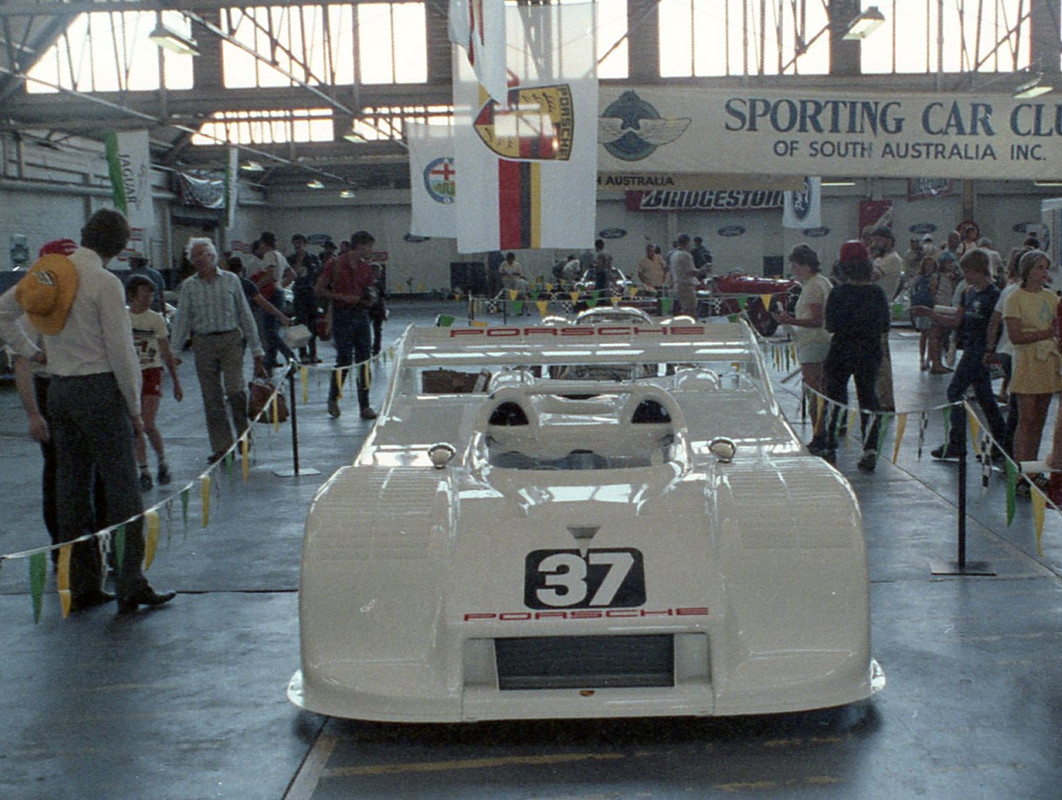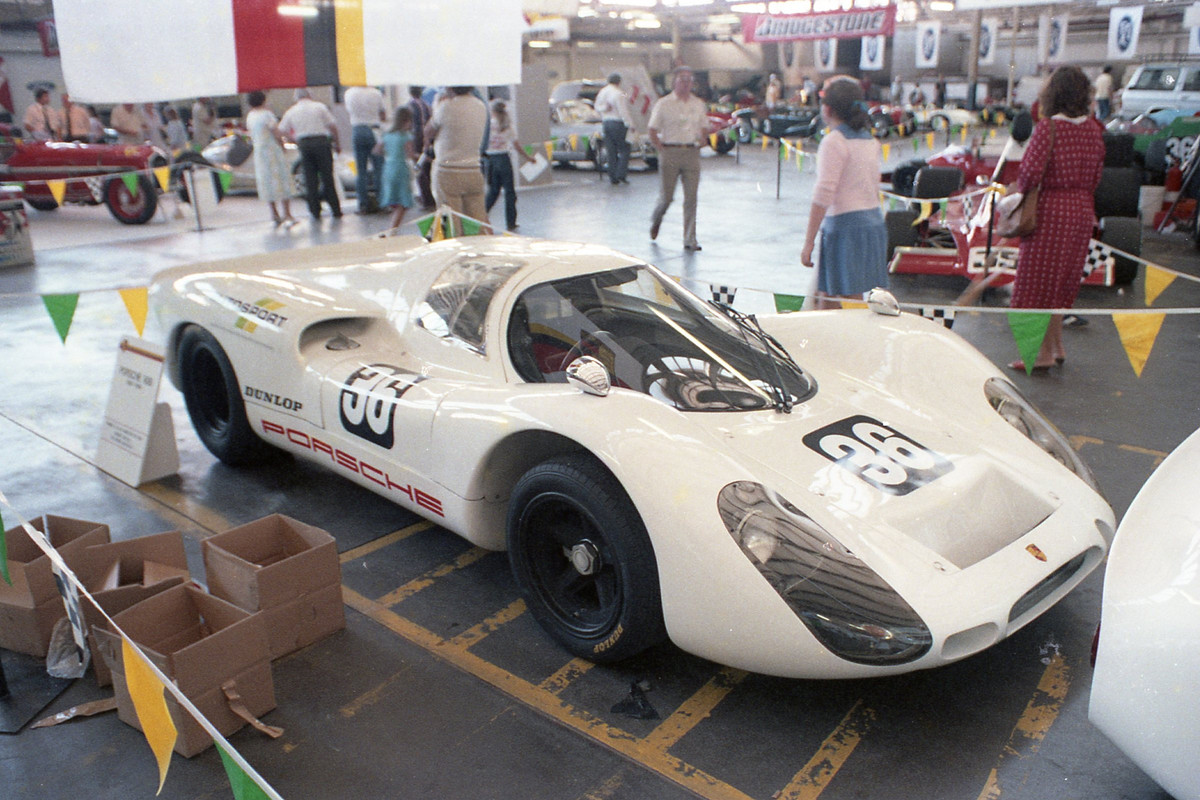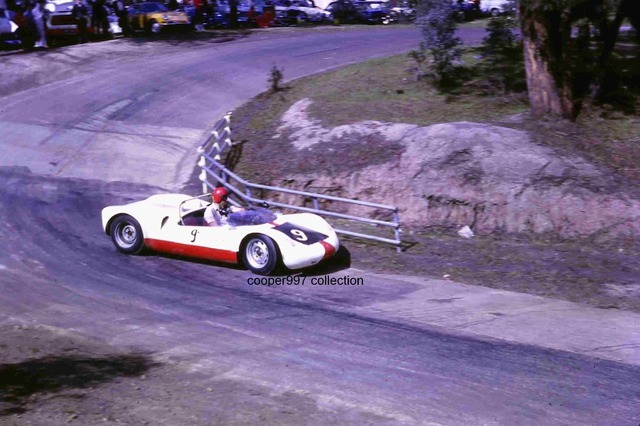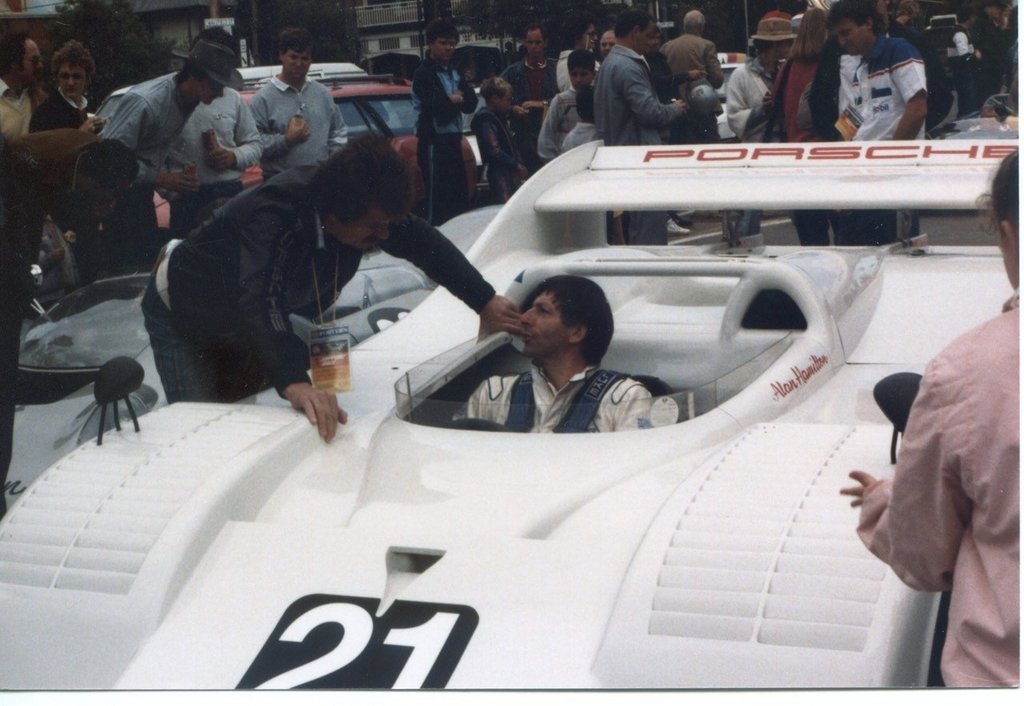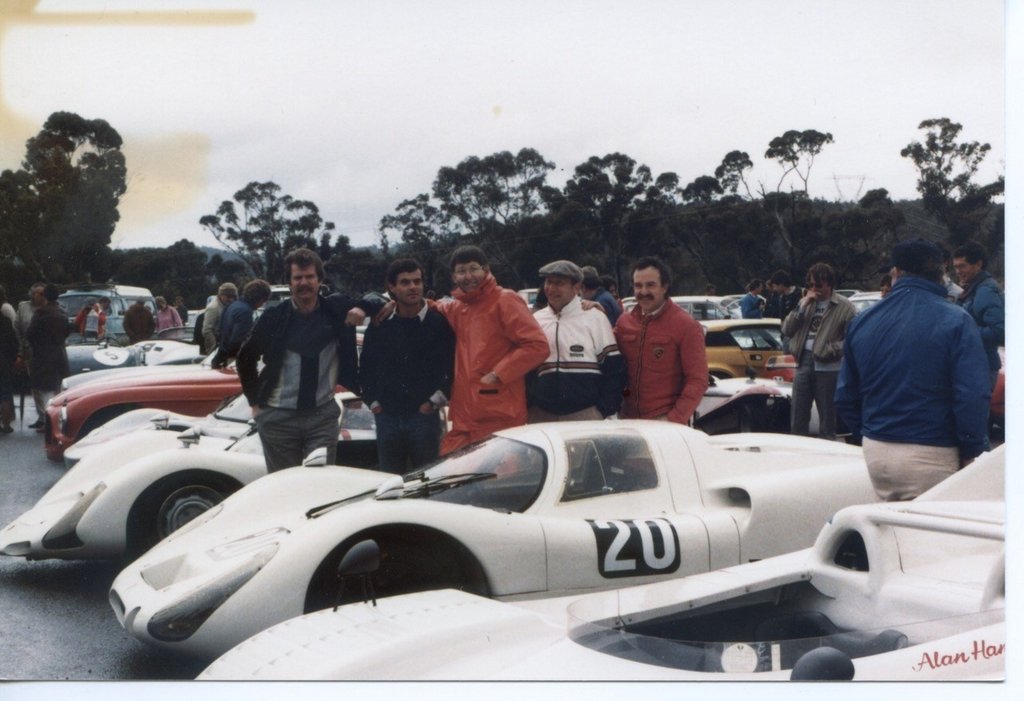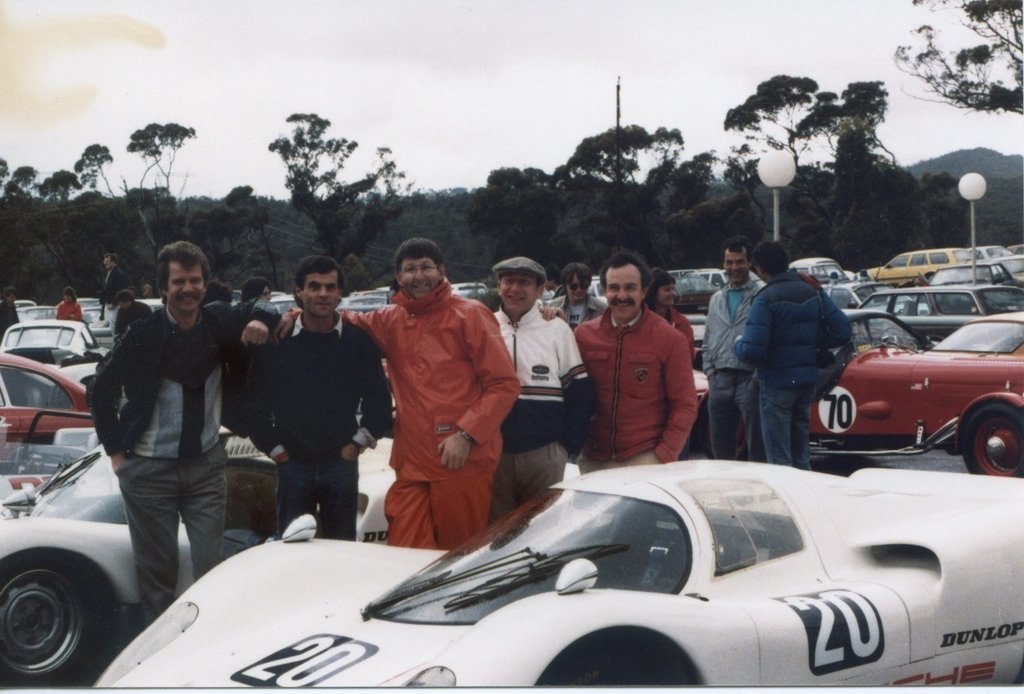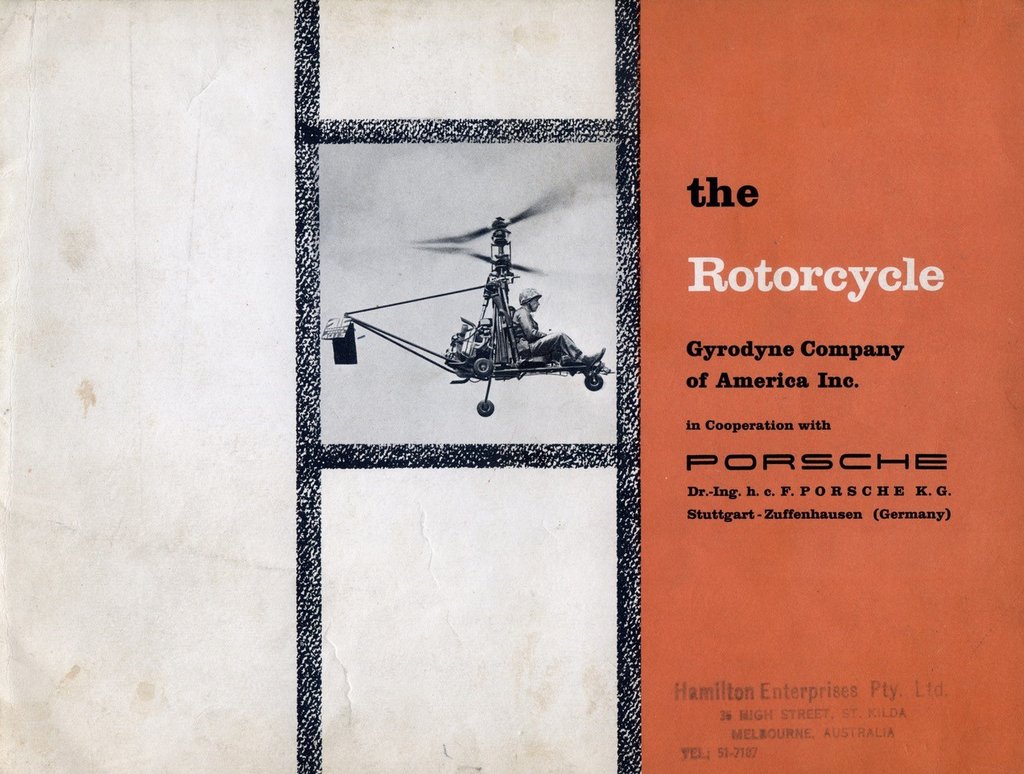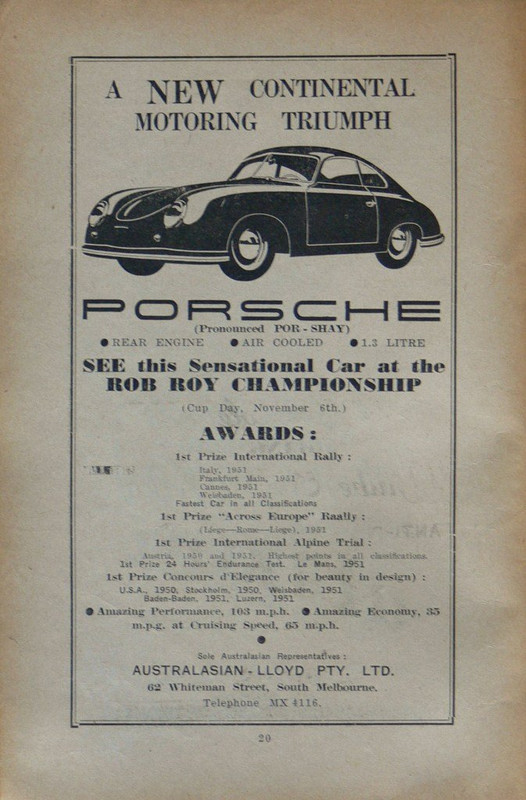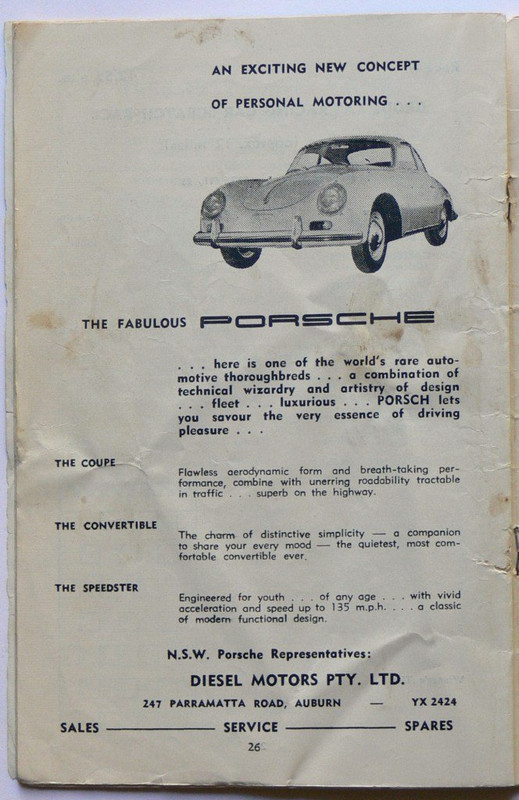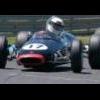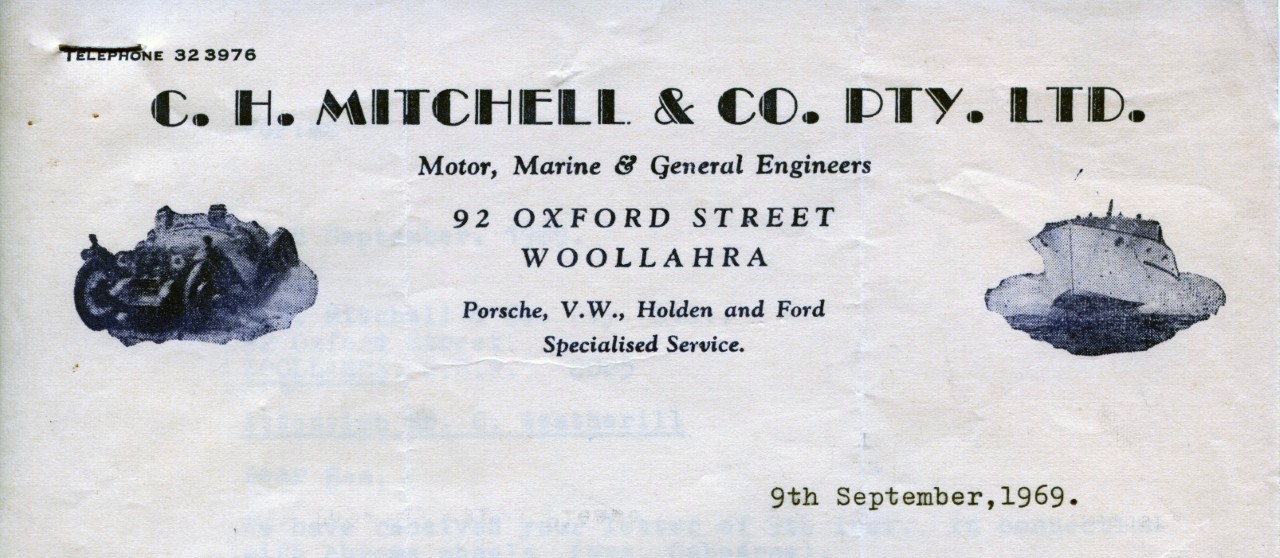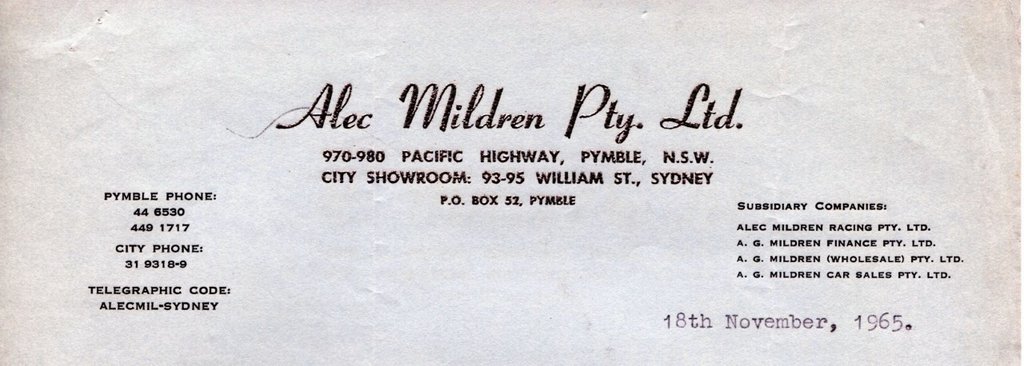With the various emails going back and forth mainly over Austin Seven related items of late, sometimes Tony Johns throws in a curved ball. The photo attached here happens to be one of the them! I asked if I could park it on TNF and Tony said yes and sent through more related photos. So rather than try and find suitable threads, this new one is being created and gives a fairly wide scope for potential contributors to the thread topic.
When Tony wasn't racing and tinkering with Austin Sevens he was employed by Alan Hamilton for a number of years. Alan had a few toys and I'm sure Tony won't mind me saying that he enjoyed working for Alan. Except when the secretary dobbed him in for chatting too much with Doug Whiteford 'about the old racing days' (Doug was service manager).
Anyway lets get on with it. The imposing RR Merlin is one Alan came home with from Jumbo Goddard's October 1984 auction. Of course one jokingly looks at the lineup and thinks 917... not fast enough. Lets get some low flying happening!!!
Tony wrote...
"The white tourer with the hood erected in the background is an Austro Daimler that was a trade in on a Porsche 928. The photo was taken prior to Alan completing the restoration of his Porsche race cars.
This Merlin photo taken at Noble Park. Porsche Cars Australia head office and Bond store, 576 Princes Highway (opposite Sandown Park circuit)
Both Jims (Hardman & Shepherd) were responsible for the restoration of all three white cars. Also I think but not positive the engine on the ground is a 935 twin turbo that was a spare for the red 934 that Alan Moffat drove for ADH. Now in the Bowden collection?"
Stephen



